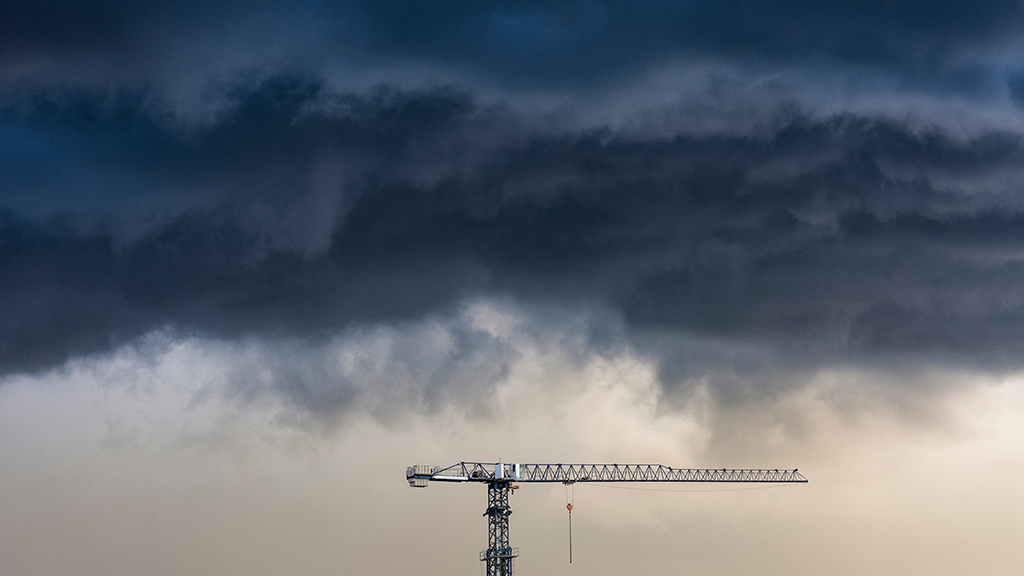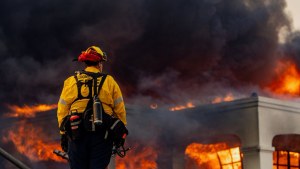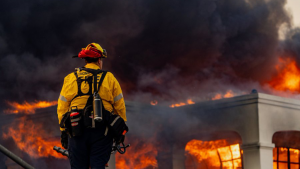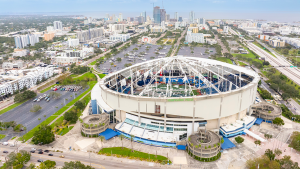ST. PETERSBURG, FLA. — The mayor in St. Petersburg, Florida, warned residents that cranes at several construction projects across the city might fall in Hurricane Milton and at the storm’s peak on Wednesday night, one came crashing down.
No one was injured when the crane working on a 46-story condominium and office building — which will be the tallest residential tower on Florida’s Gulf Coast — crashed into a nearby building where the Tampa Bay Times is located.
But the twisted metal gouged a hole where part of it came to rest in the brick and concrete on one corner of the building. Wires dangled down and bits of office items were strewn about. Another part of the crane blocked the street below. Nearby, Milton’s winds tore panels off the roof of Tropicana Field where baseball’s Tampa Bay Rays play.
No one was working in the newspaper office at the time of the collapse. City officials blocked off several blocks until they can completely assess the damage and begin working to remove the toppled and twisted crane.
Developer Red Apple Group told the newspaper that at least one crane cab in the upper section of the mast fell and they were working with city officials to assess the situation. The company didn’t respond to an email from The Associated Press on Thursday.
The 400 Central skyscraper was designed to top out at 515 feet (157 meters). It will have 301 condos at a minimum price of $1 million, along with retail and office space, the Tampa Bay Times reported.
It will probably require at least one more crane to dismantle the twisted mess, just like construction crews usually need another crane to start building a crane.
Most structures that build skyscrapers are called tower cranes, and they are able to build their own tower higher as the building goes up.
The key part of crane safety is carefully balancing all the competing weights and forces.
“When that cab operator shuts the crane off, he immediately releases the brakes and puts it into ‘weather vane’ mode so it can move with the wind,” said Tom Barth of Barth Crane Inspections in Goose Creek, South Carolina.
If a crane stayed in one spot, the wind would provide more resistance like a hand stuck in a river. But if the boom can turn, the wind can blow alongside it and reduce that resistance, Barth said.
“Even on a seemingly calm day, you’re going to see that boom move a little,” said Barth, who has operated and inspected cranes for about four decades.
Experts said most cranes are designed for winds of at least 100 mph (161 kph), and those in places like Florida, where hurricanes are a greater hazard, often have a greater wind resistance.
But there is only so much force a crane can handle. That’s why St. Petersburg Mayor Kenneth Welch warned anyone living near construction projects that use a crane to leave, and police made sure areas threatened were cleared.
Because cranes have to be both raised and removed carefully, it can take days or longer to remove them, Barth said.
That’s time that usually isn’t available once forecasters lock in on a potential path for a storm.











Recent Comments
comments for this post are closed